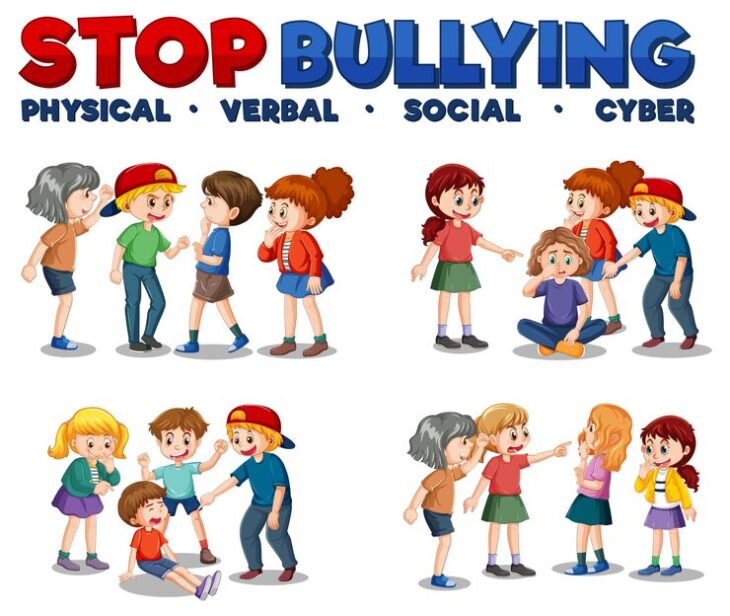
A common occurrence among young people is hurting someone’s feelings, creating issues for them, and making them feel horrible. Peer bullying has been a major problem for schools, youth organisations, and local communities for a long time. We would like to think that we are teaching young people interpersonal and intra-personal skills that will help them feel confident in themselves as well as empathic and respectful towards others. Is cyberbullying only a modern manifestation of this?
Research is starting to demonstrate that cyberbullying differs greatly from conventional bullying in schools. The image below illustrates a few significant variations.
- Cyberbullying is frequently spontaneous, but traditional bullying is typically planned:- According to research, unlike traditional bullying, cyberbullying is rarely planned. Unlike conventional bullying where the bully plots the attacks, cyberbullying is frequently carried out on the spur of the moment and is not premeditated.
- While cyberbullying can occur anywhere and at any time, traditional bullying is more predictable:- Conventional bullying is typically restricted to specific locations and periods, such as the playground or the commute to school. Because of this, the target has a limited feeling of predictability and can feel safe in certain situations. On the other hand, technology is all around us; we are constantly surrounded by computers and phones. Cyberbullying can occur 356 days a year, 24 hours a day, and 7 days a week. It might occur over long distances or right next to us. The target has a hard time finding a safe place.
- Cyberbullying may not use aggression and power to achieve control like traditional bullying does. While thirst for control and power, and purposeful target-targeting are characteristics of classic bullying, cases of cyberbullying might not exhibit these traits.
- While cyberbullying might be anonymous, traditional bullying occurs in person:- Because it doesn’t require face-to-face interaction like traditional bullying does, cyberbullying is “an easier way to bully. The bully’s empathy for the target is diminished when they hide behind the computer. We may not realise we have gone too far if we do not see the person’s response to our posts or texts. It is easy to say or do things that we wouldn’t do to someone’s face when we are desensitised to the computer screen. Additionally, whereas “traditional” bullies are typically identifiable, anonymous cyberbullies can be extremely difficult to identify, which makes it easier for bullies to evade detection and the repercussions of their behaviour.
- The roles in cyberbullying are usually not as clearly divided as in traditional bullying:- We often work with a bully, target, or spectator in conventional bullying. Even though it’s common to discover that bullies have been the victims of violence in the past (either as children or at the hands of a more powerful person), the roles in each situation are very obvious. This isn’t always the case when it comes to cyberbullying. Young people frequently take on several roles at once, including witness, target, and cyberbully. Additionally, there is no definitive profile of who can be the target or the cyberbully; anyone can be the victim.
- Traditional bullying is done in secret; cyberbullying can go public and viral:- The fact that cyberbullying frequently attracts a large number of observers is one of its particularly troublesome features. Bullying in the traditional sense occurs more commonly in private than in public. However, technology makes it simple to swiftly disseminate content to a large audience in cases of cyberbullying. Bullying on the internet has the potential to go viral or extremely public very rapidly. The encounter is particularly challenging and embarrassing for the target because of the large audience.
- Traditional bullying seems to have clearer predictors and risk factors than cyberbullying:- According to recent public health research, a person’s general health and mental health, including their capacity to prevent or manage violence and “traditional” bullying, are strongly correlated with a number of “social” factors, including education, socioeconomic status, access to services and resources, family relationships, employment, etc. It’s unclear how these relate to cyberbullying. It appears that there are no “typical” cyberbullies or targets—anyone might become a victim. For instance, it is commonly known that in conventional bullying, older teenagers are more likely to bully than preadolescents, bullies are more likely to have low self-esteem than good self-esteem, and males are more likely to become bullies than girls. However, age, gender, or self-perception do not appear to be good indicators of cyberbullying. It’s interesting to note that having positive interactions with significant adults appears to be a powerful defence against both traditional and online bullying.
Discover more from Amigo Cyber
Subscribe to get the latest posts sent to your email.
-
Previous Post
The infamous case studies of cyber bullying
-
Next Post
DDOS attack at Parliament of Finland











